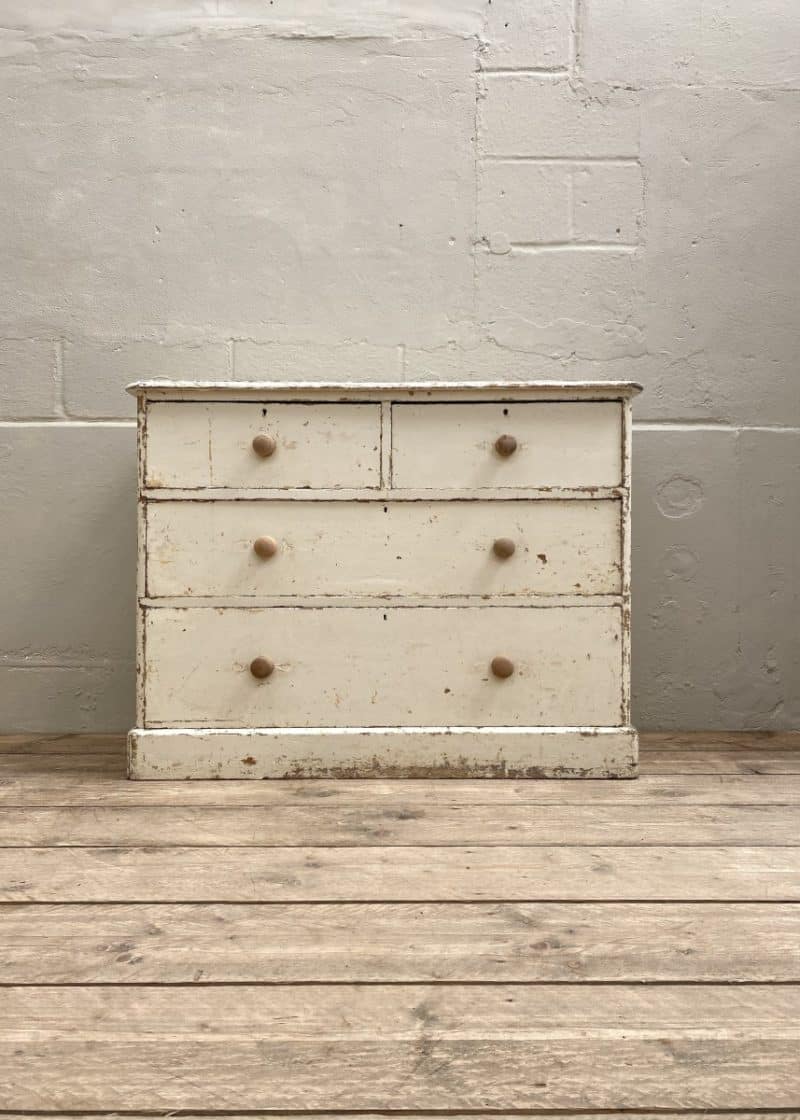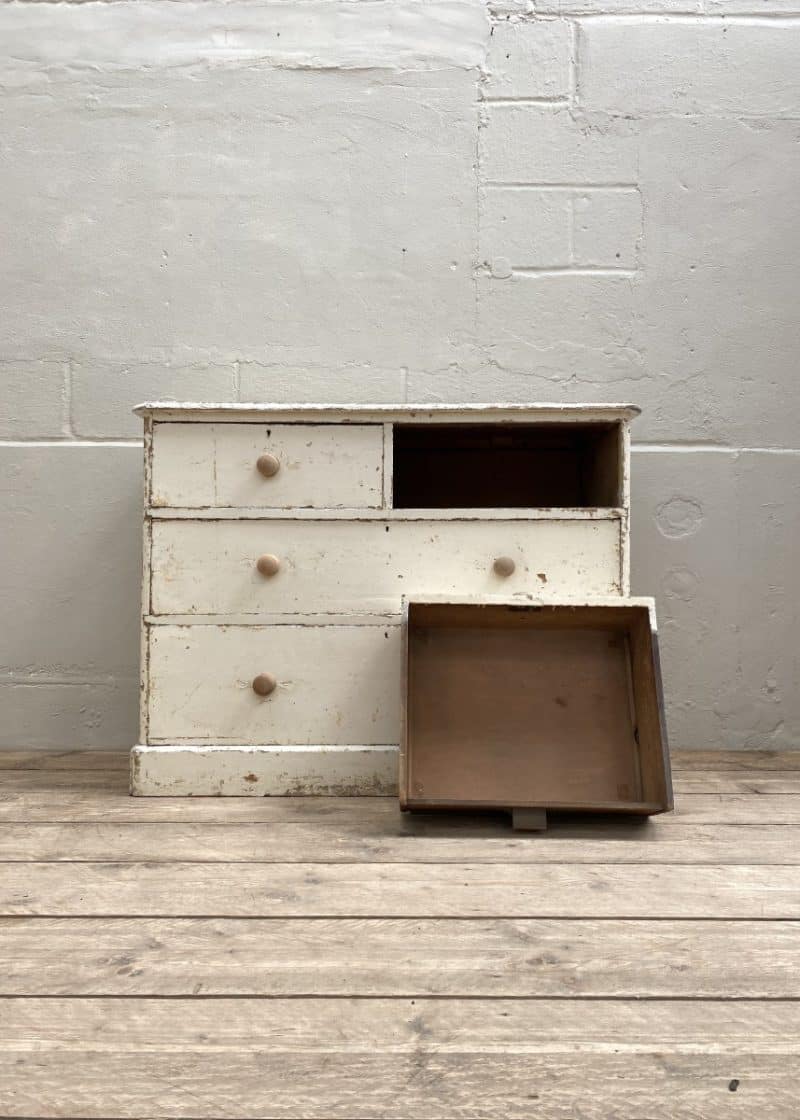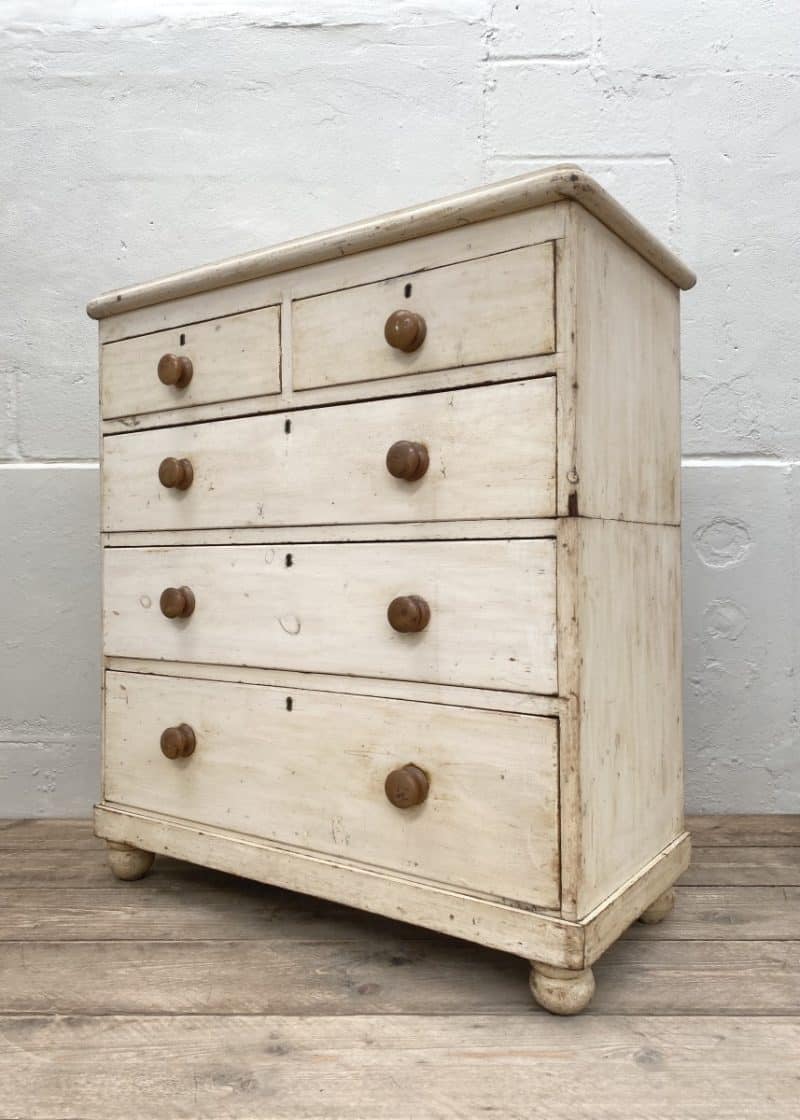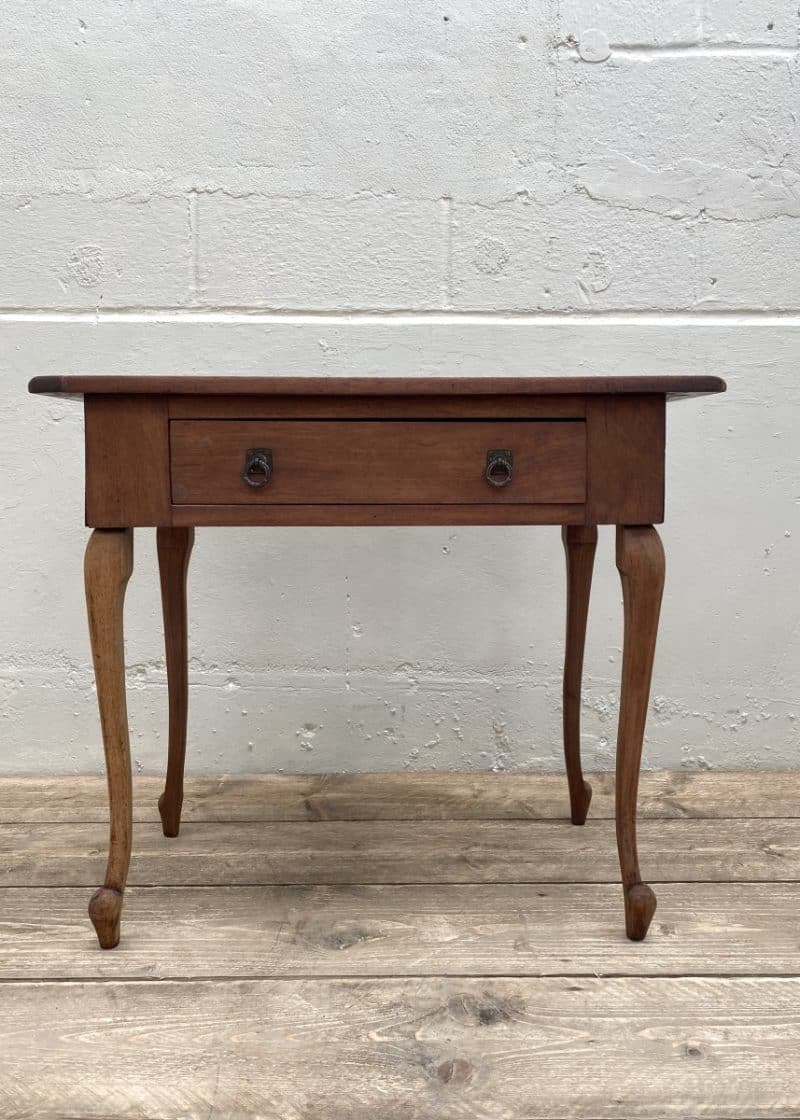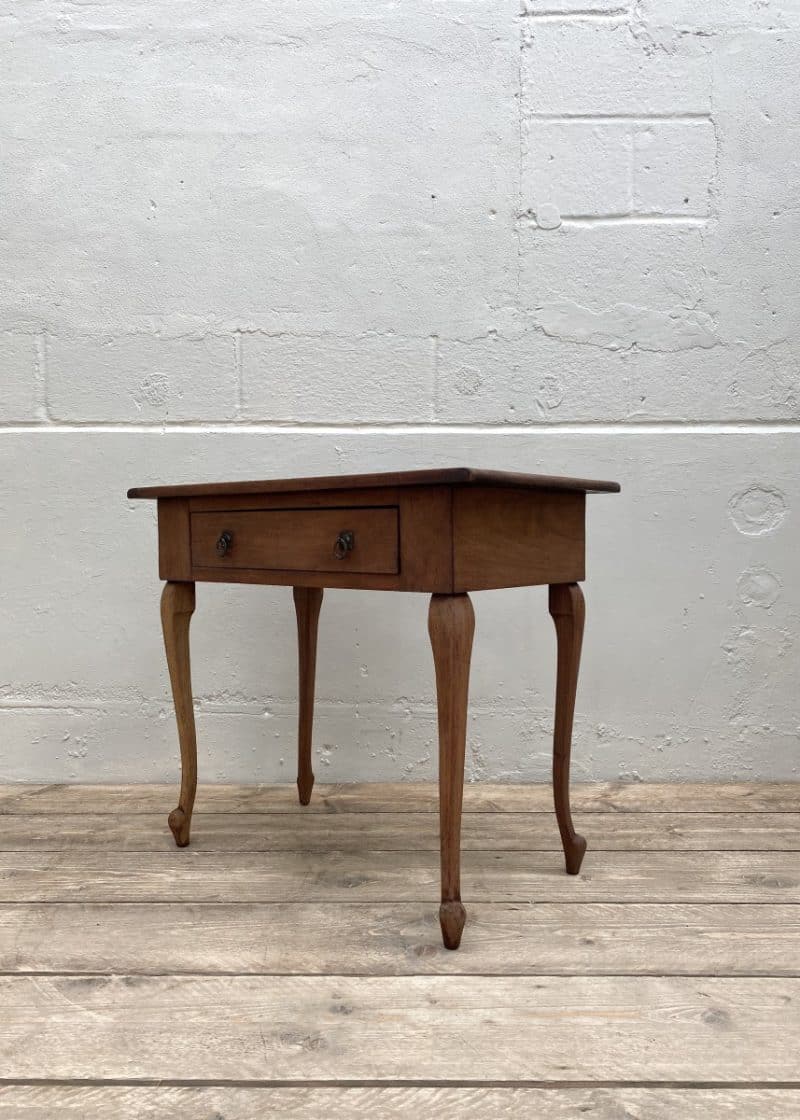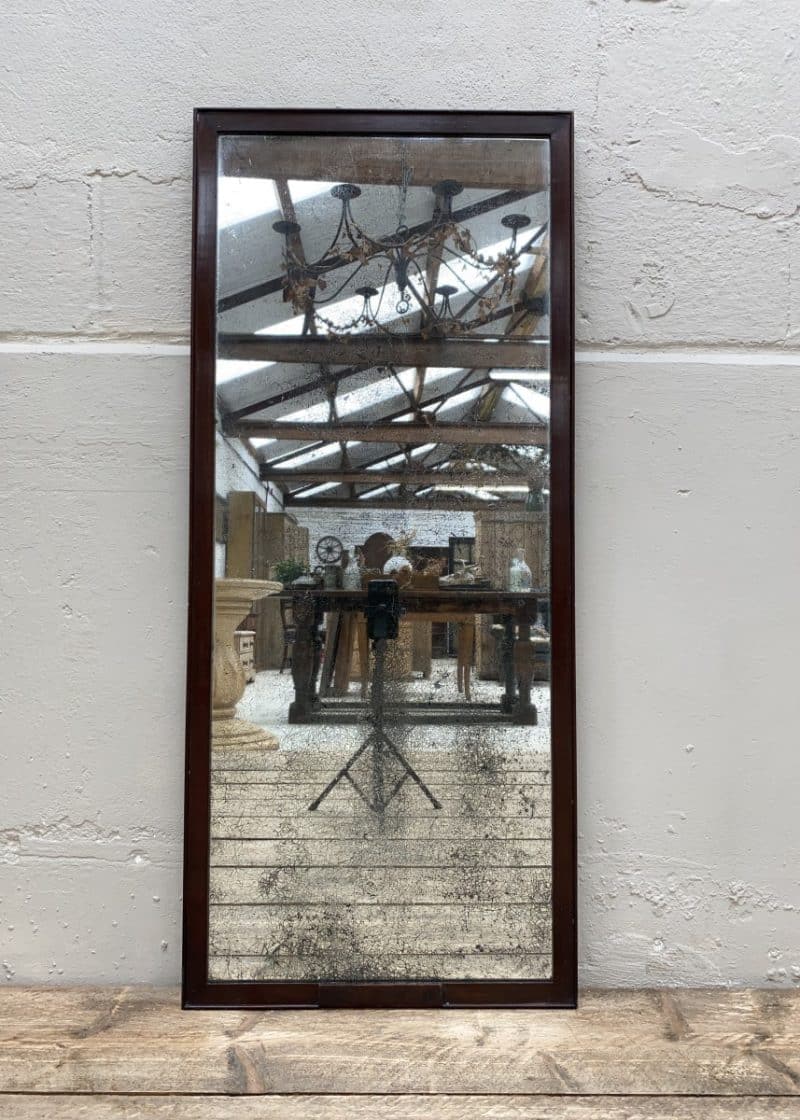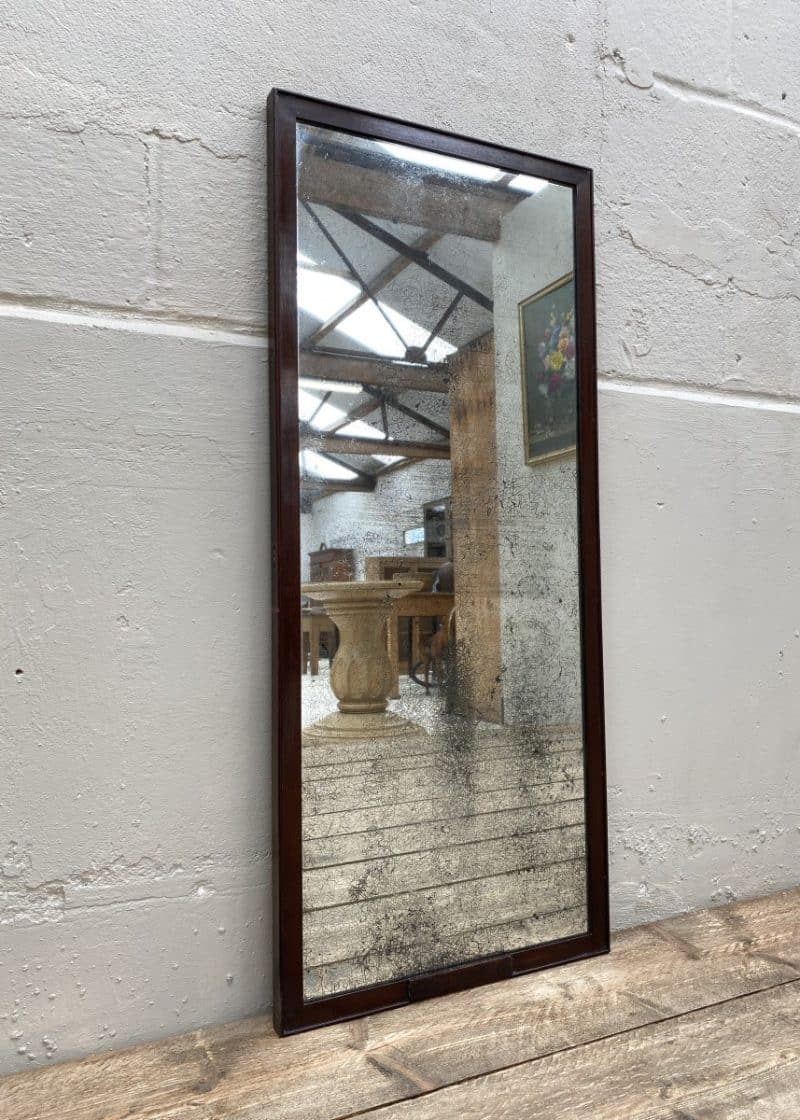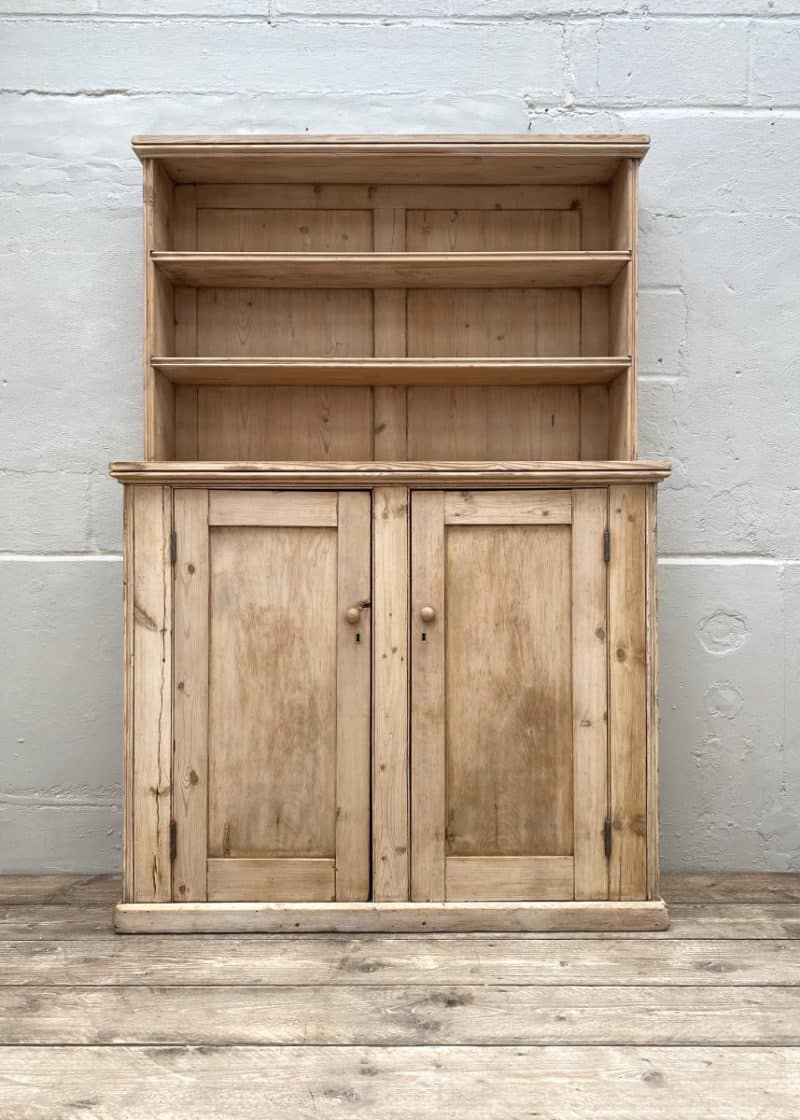Showing 169–180 of 510 results
-
Old painted pine chest of drawers
£360.00Old painted pine chest of drawers
English c.1880
In a mid 20th century white paint. The outer layers dry scraped back to a more attractive white with contemporary pine knobs
-
Victorian original painted pine drawers
£600.00Painted pine drawers
English c.1890
Modern layers of paint stripped back to the original white with darker contrasting fruitwood knobs. Splits in two for manoeuvrability and ease of transportation
-
Irish petite pine console table
£230.00Pine console table
Irish c.1900
Petite in size and scale. Farmhouse style. A useful piece of furniture in a variety of settings
-
Victorian pine drawers
£430.00Victorian pine drawers
English, dating c.1870-1880
Two over three design. Selection of pines and fruitwood knobs
Painted, we removed three layers, retaining the majority of the original red stain finish. This would have been to give the illusion of mahogany, a much more expensive and sought after wood of that particular time
Adding a shade of warmth to an interior
-
Painted aesthetic chest of drawers
£520.00Painted chest of drawers
English, c.1880
Aesthetic movement in period. Later paint was removed, retaining the original cream with white undercoat
Neutral, subtle and stylish
-
Irish pine dresser
£420.00Irish pine dresser
Early 20th century c.1900-1920
Both pine and pitch pine. Originally would have been painted, likely a green
Petite in size and therefore suited to a variety of settings. We used this in our cottage due to limited height
-
English console table
£190.00English mahogany console table
Late Victorian c.1890-1900
A centralised drawer, the remnants of the original blue lining paper present. All on cabriole legs
-
Mahogany tailors mirror
£250.00Mahogany tailors mirror
English and dating c.1880
Originally a cheval mirror. Wonderfully foxed and patinated mercury plate
Clean, simple lines with a touch of elegance
-
French parcel gilt wall mirror
£250.00Georgian framed parcel gilt wall mirror
English, dating from c.1820 with a later 20th century mirror plate
Turned pilasters surround the frame. Old stain has developed a healthy patina whilst the visible gilt work adds an element to its past
Height – 50.5cm
Width – 85cm -
Victorian gilt overmantle mirror
£525.00Victorian overmantle mirror
English and dating c.1860-1880
Aesthetically incredibly strong. The gilt work is worn, the sweeping, curved frame and almost perfect foxing to the original mercury plate. Visible throughout but still perfectly functional as a mirror
Very much design led and a true statement in an interior space
Height – 82cm
Width – 119cm -
French pine dresser
£850.00Pine farmhouse dresser
French and dating c.1870-1890
From the northern regions
One large piece. Behind the pair of panelled doors, a shelved cupboard interior. Above, two open shelves
Some historic worm holes. All telling an untold story
Simply stylish. Clean, simple lines give this the advantage of a timeless design. Contemporary or period, equally pleasing
-
Pine farmhouse table
£800.00Farmhouse kitchen table
Early 20th century c.1910-1930
A Greek import. In the style of an English Victorian table. Multi planked top on a base with one centralised drawer. Historic woodworm, primarily on the top, leaving a rustic, tactile finish
Simple design, timeless style
